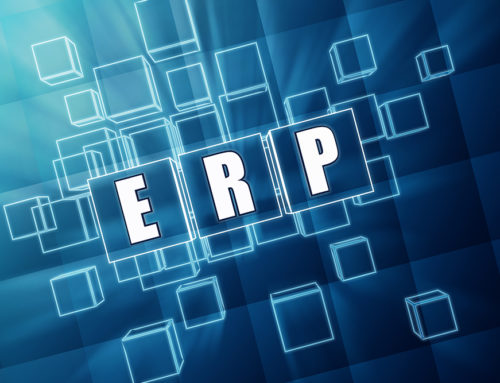Implement an ERP system and you could qualify for tax relief
Implementing an ERP system can be an expensive activity so being able to claim back a proportion of that spend through HMRC tax credits or tax relief is most definitely a bonus. E-Max’s ERP consultants have been asked on a number of occasions as to whether a company can claim R&D tax credits so we decided to ask Jessica Bayley, Content Manager of market leading UK innovation funding consultancy, Leyton, to clarify what can be claimed and how.
We were pleasantly surprised to discover that the R&D tax incentive for SMEs can be worth up to 33p for every £1 spent on qualifying innovation. What a great opportunity! Not only can you streamline your processes and become much more efficient but you could also get up to a third of your investment back. Imagine how that could benefit your business. It may sound too good to be true but it’s not! Read on to find out why HMRC are offering companies such a great incentive.
Why is R&D tax relief offered?
The proportion of wealth the UK spends on research and development has been stagnant for more than a decade and is actually much smaller than the spend in similar EU states and rapidly growing Asian economies. In recognition of this, and in an attempt to encourage companies to invest in R&D, HMRC released new guidance in October 2018 to clarify exactly what activity qualifies for R&D tax credits. The new guidance provides more detail around the context of R&D projects and what information HMRC needs for such claims with the net benefit (after tax) of the relief ranging from 7% up to 33% of eligible expenditure.
How does the R&D tax relief scheme work?
R&D tax credits have been developed to boost spending in research and development, creating a pool of resources that can be further invested. The scheme allows companies to claim back a percentage of qualifying spend based on their R&D activity and this can be done for up to 2 years retrospectively from the financial year end. The most recent HMRC statistics show that the take up of this scheme has been mixed depending on the sector.
Leyton can help you to uncover the maximum R&D potential in your business, and will produce the technical report which enables you to submit a claim. They will explore your business activities in detail using qualified sector experts to ensure that all potential qualifying costs are considered.
How can we tell if we qualify for R&D tax relief?
UK limited companies that are subject to Corporation Tax are eligible to apply for R&D tax incentives. You will need to have carried out qualifying research and development work and incurred operational expenditure on these activities. In the case of a manufacturing or engineering company wishing to claim tax credits for an ERP system, these activities can include time spent:
– researching a system
– identifying an appropriate solution
– reviewing existing processes and
– implementing the software, including planning and training activities
Analysis from Leyton indicates that many companies, particularly SMEs, could be underclaiming due to a lack of understanding about what work legitimately qualifies. Research and development, as defined by the government, covers a very broad set of activities, including products, processes and computing. Systematic activities undertaken with an aim of either developing a new product, process or service or improving an existing product, process or service generally qualify for R&D tax relief.
As a key reason for implementing an ERP system is to increase efficiency across processes, activities associated with this usually qualify. Other activities that can usually be included in a claim could be any bespoke developments of the software (system improvement) and the preparation and transfer of data across systems (migration).
Case Study
Leyton has worked with a business who builds bespoke and hand-built websites and applications to support their customer’s business processes. R&D has helped this business to build lean web frameworks which significantly improve website performance: higher google ranking; faster page load times; higher conversion rates; and improved usability, accessibility, security and maintenance. As a result of the scheme, this company is now more willing to carry out R&D. This results in higher performing, well optimised websites and success for their clients. Leyton’s experience and knowledge of the tech industry was an important factor in the success of this claim.
E-Max ERP is a fully integrated ERP system designed specifically for manufacturers and engineering companies. To find out more about how E-Max can improve the efficiency of your business, please call us on 0141 644 4424, take a look at our website or email us. You can also see E-Max in action by arranging a free, no obligation demo with us and see how our wide range of features really can help streamline your business.
Leyton is a global innovation funding consultancy. Businesses need help to unleash the potential that is latent within them. Yet too often they struggle to find a like-minded partner, who shares the same goals – to evolve and grow. Leyton is that partner. Leyton finds opportunities in their clients’ processes and ways of working that others can’t see, then unlock them to create value efficiently. They advise clients on all aspects of innovation funding, energy consultancy, capital advisory and employment law.
Leyton has 25 offices in 11 countries with expert teams dedicated to maximising their clients’ innovation potential. Their success is the result of developing specialist teams that are a mix of highly qualified tax experts and sector specialists who understand the challenges in their clients’ businesses.
Their technical consultants cover a wide range of backgrounds; from engineering to software, architecture to life sciences. In the UK, Leyton has a 100% success rate in claiming R&D tax relief from HM Revenue and Customs.
Want to find out if your business could qualify for R&D Tax Relief? Visit Leyton’s website for more information.







